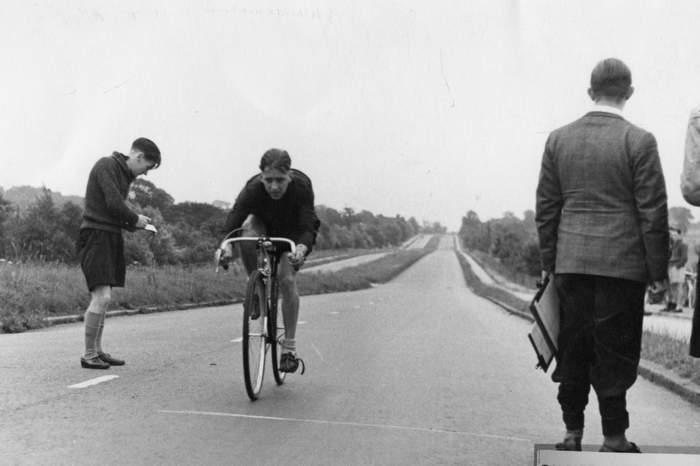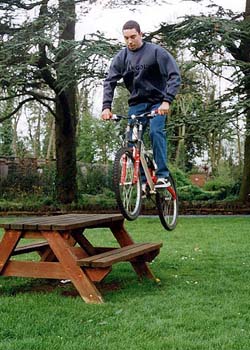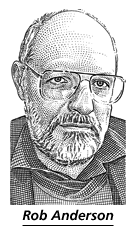Once upon a time, Britain had a bike culture
 Thu, July 29, 2010
Thu, July 29, 2010 When I left school in the early 1950s my first job was apprentice machine tool engineer with a large bearing manufacturer in Luton, England.
I rode my bike to work each day; a distance of five miles. My father did the same; a bicycle was his only form of transport. He never in his lifetime owned a car or even learned to drive one.
We could have caught a bus to work, but did so only in the extremes of winter when the roads were frozen over with ice and snow. Otherwise we rode our bikes in all weathers. So too did most of the other workers at the factory.
When the factory was built many years before, there was no provision made on the premises to park cars, with the exception of a few spaces for the top executives. Workers arriving by car had to park on the surrounding streets.
The majority of the workers arrived by public transport, bike, or on foot. Just inside the factory gates were hundreds of bike racks that held the bikes standing up at an angle, resting on the back wheel. There was a corrugated metal roof over the racks, to protect the bikes from the elements.
No one locked their bikes; we just parked them and walked to our workplace. I wore my regular work clothes, with a water-proof cape if it rained. The only other special cycling equipment was my cycling shoes and trouser clips. I kept my work boots at my work place.
I only did this because my bike had toe-clips and straps, and the shoes had metal cleats nailed to the leather sole. Most workers arrived wearing their work books, on more utilitarian bikes with plain rubber pedals.
This was the norm for most of the working class in the UK throughout the 1950s. Cycle racing, and in particular time-trialing was very much a working class sport. Many riders had only one bike that they raced on, trained on, and was their transport to and from work.
I was in my early thirties before I got my first driver’s license and owned my first vehicle. It was a van that I used to transport my bike to races. It allowed me ride in events further afield.
In 1969 I moved to Worcester in the West Midlands area of England. I was married by now with two small children. My in-laws, the children’s grand-parents lived near Mansfield, Nottingham, about 100 miles away.
To visit them was at least a six hour drive, using a network of various roads that ranged from main trunk roads to tiny country lanes.
We must have passed through dozens of little towns and villages on the way, each with narrow streets that slowed the journey. A trip to grandma’s was a chore with two small children who were asking “Are we there yet?” within ten miles of setting out.
Then throughout the 1970s, Britain embarked on building a nationwide network of trunk roads and motorways linking all the major cities together. The trip to grandma’s now only took two hours.
All this coincided with the discovery of oil in the North Sea off Scotland. I’m not sure if this had anything to do with it, but looking back it was a period when Britain became committed to the automobile, just like the US.
People started buying up cheap housing out in the rural areas, and the newly built network of roads meant they could commute long distances to work in the city in a relatively short time.
All very nice, but now with thousands converging into the large cities each day, how do you accommodate all these cars on narrow city streets designed and built before the 1800s when people drove horses and carts? Where to park them all becomes a huge problem.
Going back to the 1950s there were less people, and on top of that a typical family like mine, consisted of my mother and father, and my sister and me. No one owned a car; my father and I rode a bicycle, and my mother and sister used public transport.
Forward to today and that same typical family will own as many as three or four cars. Great Britain in the mean time did not get any bigger; it is still about the size of California.

The picture above shows a 1950s time-trial held on the main trunk road heading east from London to Southend. Agreed that it would have been early in the morning, but on this dual-carrageway, (Divided Highway in the US.) there is not a car in sight. It is not without reason the 1950s is referred to as “The Golden Age of Cycling.”
Countries like Denmark and Holland did not begin to develop a bicycle culture in the 1970s, they took steps to expand on what they already had. Those two countries are a fraction of the size of the UK; about the size of Wales.
They had the foresight to see they could not afford the luxury of allowing every man, woman and child to own an automobile. Britain could have done the same, had the politicians foreseen where they were headed.
You don’t just need a supply of oil to support a car culture; you need a lot of space. America has so much space it wastes it, and even so still has problems with congestion in all major cities.
Britain has to do something or it will become a huge parking lot with no one going anywhere. They need an efficient public transport system into all major cities, and penalize cars driving in as they are doing in London.
And people need to ride bikes again; I did it and so too did my father, all his life. Back in the days when we had a bike culture



























Labels and other BS from Copenhagen
Labels can be useful; for example if I say “Vehicular Cycling,” most regular readers of this page will know exactly what I am talking about. If you don’t this short video explains it.
To me this is defensive riding that works because for the most part, drivers of motor vehicles will go out of their way to avoid hitting you as long as they know you are there.
It is the inattentive or distracted driver who is the most danger, but by riding predictably, signaling intent, and correct positioning on the road, you make even the most inattentive driver aware of your presence.
For example, whatever direction I leave my home I have to travel a busy two-lane highway. The traffic seems to come along in platoons because of traffic lights in both directions.
When the road is clear behind me I ride out in the lane about two or three feet. When I hear a vehicle approach from the rear, I move over to the right to let them pass.
This has the effect of slowing them down and the first car makes a conscious effort to go wide around me. Each car following does the same.
If I stay close to the right edge of the road all the time, a car approaching from the rear will not slow down and will often not deviate from his line of travel.
A driver of a car three or four vehicles back will not even know I am there. If people want to label this “Vehicular Cycling” that’s okay; it works for me.
However, I prefer not to be labeled a “Vehicular Cyclist.” I didn’t pay a subscription to join a Vehicular Cyclist’s organization. I have not even read John Forester’s book. (He’s the man who coined the term.)
I am simply a “Cyclist” doing what is necessary to survive while riding my bike on today’s streets and highways.
I have just read an article by Mikael over on Copenhagenize.com titled “Vehicular Cyclists – Cycling’s Secret Sect.” A secret sect… Really. The writer suggests that Vehicular Cyclists:
The article then goes on to ridicule Vehicular Cyclists, comparing them to the Flat Earth Society. According to Mikael it is our own fault, the established cyclists in America and the UK, that we don’t have a widespread cycling infrastructure.
What utter bull-shit. I would love it if my local authority was making my city as bike friendly as Portland, Oregon, or Davis, California. But in the mean time I am making do with what I have. The other alternative is to not ride my bike.
There are many people who would ride a bike but are scared to do so I today’s traffic. It is the avid cyclists who take to the road each day, who are showing others that it is possible to survive out there.
Who knows how many others might be encouraged to try cycling just by seeing us pedaling around the city streets. The more cyclists on the road the more cities are likely to facilitate cycling.
I suggest Mikael does not have a clue what it is like to ride a bike in any American city, or in the UK for that matter. Both countries are steeped in the car-culture, and it is not going to change overnight.
The situation is improving, but slowly; I doubt there will be huge improvements nationwide in my lifetime. All we can do in the mean time is keep riding our bikes, while doing whatever is necessary to stay safe.